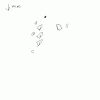knot_moving
Member
I have a rules question from an incident I was involved with during a portsmouth race awhile back. There was no protest and I couldn't even say who else was involved if I had to, but I did wonder how to sort out who had the obligation to give way and how that was supposed to be accomplished.
Scenario was 3 boats of different speeds approaching the windward mark on port, A was much faster and was the windward boat, B was the middle boat and I was C, the leeward boat. A 4th boat, S, was approaching the mark on starboard.
From what I remember, A came charging in between B and the mark, forcing, S to slow down and luff up to prevent colliding with A. A was clearly in the wrong here (don't remember if there was protest and they did circles or not). With no other boats on the course but S and myself, I was set up to pass just astern of S, tack and follow around the mark. With B present, B would be forced to take action to miss S. I was leeward of B. Does B have the right to call for room from me (without A present, B could have tacked low of the mark to evade S)? I had to fall off to give B room, since A came charging in, blocking B's option of tacking to evade S.
A's thought process was that once she was up by B, she was close enough that A could no longer tack without hitting B, also there was no way for all of us to bear off enough to miss S. So my question is how far ahead of time is a boat required to "think ahead" to make sure they can evade a right of way boat. I think A could have been protested for forcing S to alter course. Beyond that I can't see any other protestable action (A was moving much faster than B & C and all 3 hit the 2 boatlength circle at pretty close to the same time). A would have had to tack before she came up even with B.
Scenario was 3 boats of different speeds approaching the windward mark on port, A was much faster and was the windward boat, B was the middle boat and I was C, the leeward boat. A 4th boat, S, was approaching the mark on starboard.
From what I remember, A came charging in between B and the mark, forcing, S to slow down and luff up to prevent colliding with A. A was clearly in the wrong here (don't remember if there was protest and they did circles or not). With no other boats on the course but S and myself, I was set up to pass just astern of S, tack and follow around the mark. With B present, B would be forced to take action to miss S. I was leeward of B. Does B have the right to call for room from me (without A present, B could have tacked low of the mark to evade S)? I had to fall off to give B room, since A came charging in, blocking B's option of tacking to evade S.
A's thought process was that once she was up by B, she was close enough that A could no longer tack without hitting B, also there was no way for all of us to bear off enough to miss S. So my question is how far ahead of time is a boat required to "think ahead" to make sure they can evade a right of way boat. I think A could have been protested for forcing S to alter course. Beyond that I can't see any other protestable action (A was moving much faster than B & C and all 3 hit the 2 boatlength circle at pretty close to the same time). A would have had to tack before she came up even with B.

